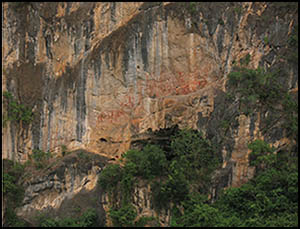Article contents
Travel and landscape: the Zuo River Valley rock art of Guangxi Zhuang Autonomous Region, China
Published online by Cambridge University Press: 05 June 2015
Abstract

Rock art, especially in China, has often been associated with the non-literate, non-Chinese periphery. It is often thought of very broadly as a universal phenomenon rooted in religion and sharing a widely recognised iconography. This paper challenges both of these assumptions. Its focus is the rock art of the Zuo River in the Guangxi Province of China and in particular its landscape location and visibility. Broadening the parameters of what we categorise as rock art, such art is shown to have multi-layered meanings that spoke to different groups in different ways. The content, location and visibility of images along this arterial waterway reveal how rock art played a significant role in life and death in Late Bronze Age and Iron Age Guangxi.
- Type
- Research
- Information
- Copyright
- Copyright © Antiquity Publications Ltd, 2015
References
- 4
- Cited by




